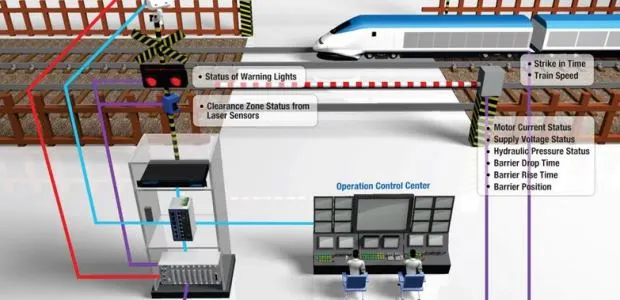
March 15, 2017
How to Make Railroad Crossings Safer and Smarter


March 15, 2017

High-traffic railroad crossings remain a safety concern despite the widespread use of active warning systems to clear the tracks for oncoming trains. Although most train-and-car collisions are highly preventable, both real-time and historical data about railway assets, wayside equipment, and warning devices are required to help car drivers and pedestrians, railway operators, and local authorities avoid future accidents and perform root cause analysis in the wake of a crash. Consequently, transportation and safety professionals are increasingly deploying advanced data acquisition and IP video surveillance technologies to provide more complete and accurate information to make existing railroad crossings smarter and safer.
Overview Modern railroad crossings have come a long way from the early days of human railway employees waving red flags and shining lanterns to clear railroad tracks of vehicles and pedestrian traffic for oncoming trains. As is still the case today, 19th century railways were deeply concerned with preventing accidents and protecting assets. Responding to these concerns, railroads began to implement manual, and eventually electrical, crossing barriers to block road traffic from the rail tracks. Although clear, simple signage may be sufficient for railroad crossings in sparsely inhabited regions, high-traffic intersections today often feature active warning systems, which include electrical boom gates, flashing lights, and warning bells that are triggered when an approaching train trips a nearby track circuit.
However, despite these modern safeguards, railroad crossings continue to pose a serious safety issue around the world. In fact, crossing accidents claim the lives of roughly 300 Americans1 and 400 Europeans2 every year. Besides the tragic loss of human life, railroad crossing accidents cause expensive asset damage (e.g., train cars, rail tracks, crossing equipment, etc.), time-consuming traffic jams, and inconvenient service suspensions. More so than other railway failures, such as those related to railroad switches, railroad crossing accidents tend to be attributed to human error and violations of traffic regulations. For example, 98 percent of collisions between a train and a vehicle or pedestrian at railroad crossings in France can be attributed to carelessness.5 Although human error may seem like an impossible obstacle, it is one cause of accidents that can be reduced by equipping people with the right information at the right time.
Read full article at OHSOnline.com
Photo Courtesy of OHSOnline.com